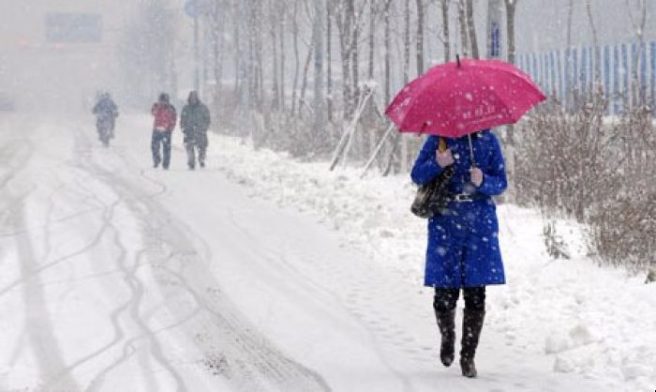
Drivers warned to take extra care as THUNDERSNOW arrives in Ireland
While we are far too late for a white Christmas, those dreaming of snow could be in luck.
However, it wont be fluffy clouds of frozen fluff that falling daintily on our shores.
"Thundersnow," a rare phenomenon occurs when thunderstorms form in wintry conditions, could be en-route to Ireland.
Temperatures are expected to plummet to below zero as freezing weather takes hold of the country.
There is a status yellow weather warning in place by Met Éireann as the country is set for a very cold snap, which could include some snowfall.
If the weather is cold, the rain associated with a thunderstorm can then fall as snow, creating thundersnow.
It sounds like snow is promised in Ireland from tomorrow night. I wonder if #Sligo will get a repeat performance of this 🙂 pic.twitter.com/N2FFerM9eY
— Val (@magnumlady) January 10, 2017
The weather warning is in place from 3pm today until Saturday.
"The heaviest of the snow fall is most likely over Ulster, Connacht, north Leinster and west Munster and especially so on high ground," a statement on the Met website says.
"There will be scattered showers on Atlantic coasts will move further inland overnight and turning increasingly wintry with snow on higher ground. Lowest temperatures -1 to +2 degrees.
@MetEireann have issued a status "Yellow" warning for snow across #Ireland… yellow snow?? Heed the warning, don't eat the yellow #snow. pic.twitter.com/xOHlL7XRnq
— What's The Story? (@WTSPod) January 10, 2017
"Fresh to strong and gusty northwesterly winds will back westerly overnight and moderate.
"Later in the night, a frontal wave will pass to the South of Ireland and this brings the risk of sleety rain and snow."
Drivers are being warned to take extra care during the cold snap.
"The main thing is for motorists to give themselves plenty of time if they have to undertake a journey. Slow down and don’t rush," said Roland Hesse, spokesperson for Allianz Global Assistance Ireland.
Extra care should be taken when driving, and while we like the old "don't make unnecessary journeys, don't take risks on treacherous roads" advice, here is a concise checklist for driving safely in difficult weather.
1. Slow down! Leave earlier for work or school. That extra ten or fifteen minutes can make all the difference.
2. Don’t make sudden manoeuvres. Be gentle with braking, accelerating and steering.
3. Leave extra distance between you and the vehicle in front, in case of sudden braking.
4. Have snow tyres fitted. They are not just for snow, they are effective once the temperatures fall below seven degrees.
5. Be prepared for delays. Keep the fuel tank topped up.
6. Make sure you have your vehicle serviced, that the anti-freeze is topped up, and the battery is in good condition.
7. Keep a warm jacket and a blanket in the car.
8. Make sure you have jump leads and other essentials in your boot in case of a breakdown including a high visibility vest, boots/wellingtons, de-icing equipment and a hazard warning triangle.
9. Check that your spare wheel is in good condition and is fully inflated. Some cars may have an inflation repair kit instead of a spare wheel so make sure that you know how to use it.
10. Ensure you have adequate breakdown cover.






